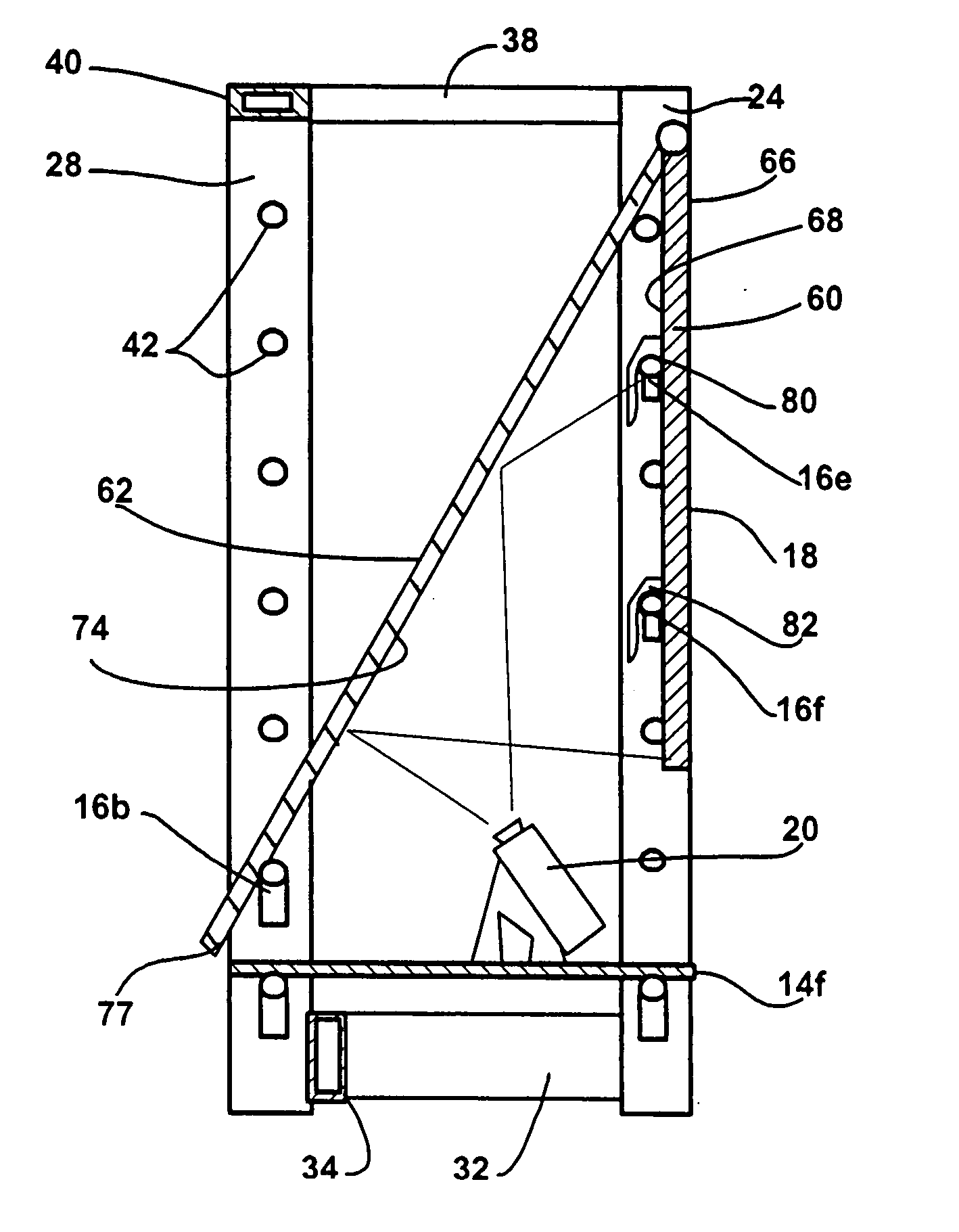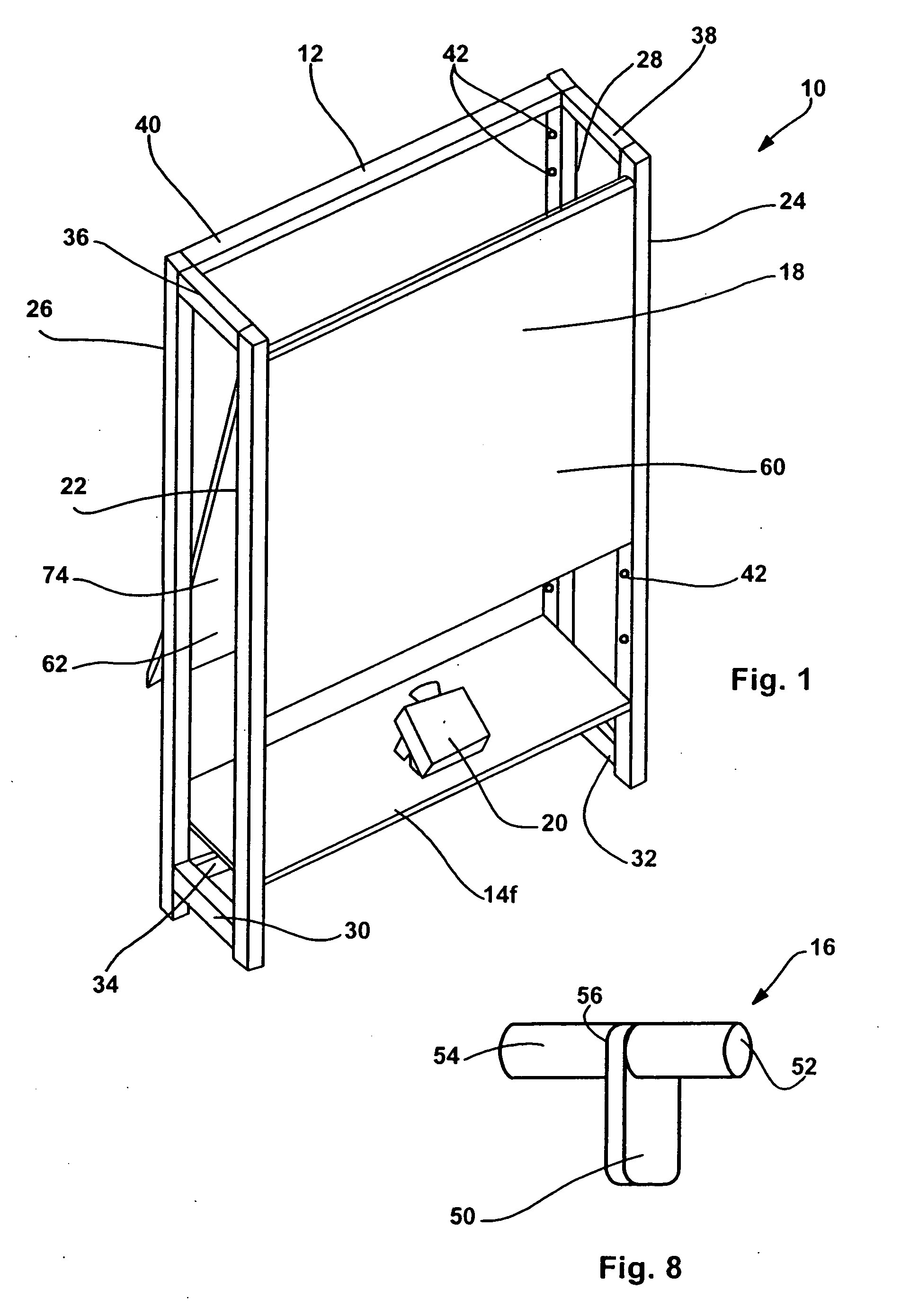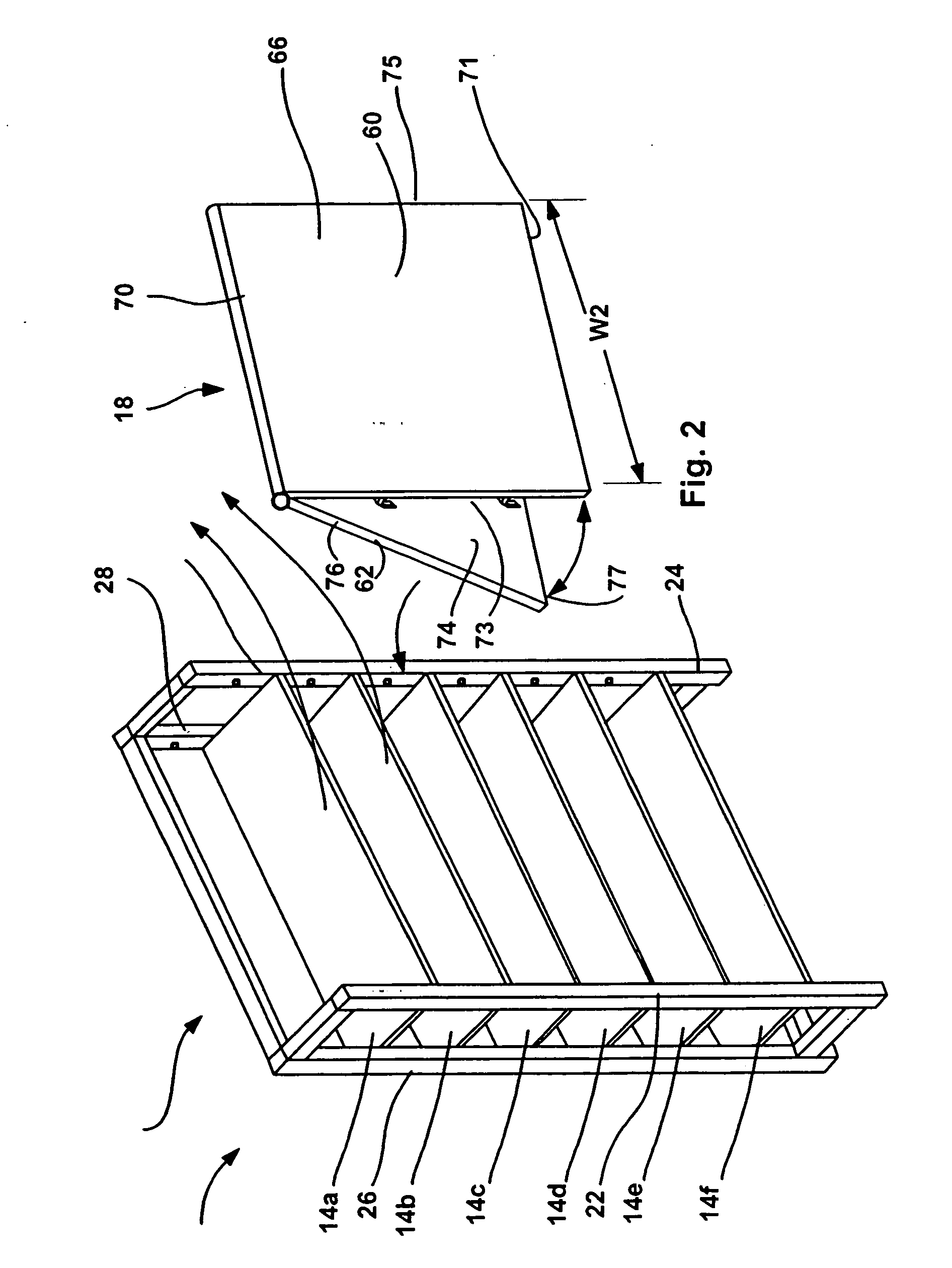Convertible projection assembly and method
a technology of projectors and components, applied in the field of rear projection units, can solve the problems of affecting the presentation of information, and affecting the presentation effect, so as to reduce the cost of the system, facilitate the presentation, and facilitate the us
- Summary
- Abstract
- Description
- Claims
- Application Information
AI Technical Summary
Benefits of technology
Problems solved by technology
Method used
Image
Examples
first embodiment
[0069] Referring now to the drawings wherein like reference numeral correspond to similar elements throughout the several views and, more specifically, referring to FIGS. 1 through 8, a first embodiment of the present invention will be described in the context of a shelf-projection assembly 10 that, as its label implies, is convertible between a shelving configuration (see FIG. 2) and a rear projecting configuration (see FIG. 1). To this end, shelf-projection assembly 10 includes a support structure generally identified by numeral 12, a plurality of shelf members 14a through 14f (see FIG. 2) (i.e., accessory members), a plurality of pin assemblies, several of which are identified by numeral 16, 16a, 16b, etc., in the figures, a screen-reflector assembly 18 and a projector unit 20.
[0070] Support structure 12 is formed of a rigid material such as steel or aluminum. In the illustrated embodiment, structure 12 includes four upright or vertical support members 22, 24, 26 and 28, and six...
second embodiment
[0094] Referring now to FIGS. 9 through 13, a second embodiment of the present invention is illustrated. This second embodiment is similar to the first embodiment in many respects and therefore, in the interest of simplifying this explanation, only differences between the first and second embodiments will be described here in detail. Components in this second embodiment that are similar to the components described above with respect to the first embodiment are identified by similar numbers herein followed by a prime (i.e., “′”).
[0095] In general, there are three primary differences between the first and second embodiments. First, instead of providing a single assembly 18 that includes both the screen member and the reflecting member, in this second embodiment, the screen member is separate from the reflecting member and the screen member and reflecting member mount separately to the support structure 12. Second, the mounting structure for the screen member in this second embodiment...
third embodiment
[0104] According to a third embodiment of the present invention, a screen member similar to the screen members described above may be mounted on tracks to be moved laterally to any of several different positions with respect to an extended shelving assembly. Here, the screen member, when not being used for displaying projected images, may be used as a sliding door member or the like to hide materials therebehind.
[0105] Referring now to FIGS. 14 through 16, a third embodiment 10″ of the present invention including a sliding screen member 60″ is illustrated. In this third embodiment, many of the components are substantially similar to the components described above with respect to the first two embodiments and therefore, in the interest of simplifying this explanation, will not be described here again in detail. Here, it should suffice to say that similar components are identified by similar numbers followed by a double prime (i.e., “″”).
[0106] The primary differences between this t...
PUM
 Login to View More
Login to View More Abstract
Description
Claims
Application Information
 Login to View More
Login to View More - R&D
- Intellectual Property
- Life Sciences
- Materials
- Tech Scout
- Unparalleled Data Quality
- Higher Quality Content
- 60% Fewer Hallucinations
Browse by: Latest US Patents, China's latest patents, Technical Efficacy Thesaurus, Application Domain, Technology Topic, Popular Technical Reports.
© 2025 PatSnap. All rights reserved.Legal|Privacy policy|Modern Slavery Act Transparency Statement|Sitemap|About US| Contact US: help@patsnap.com



